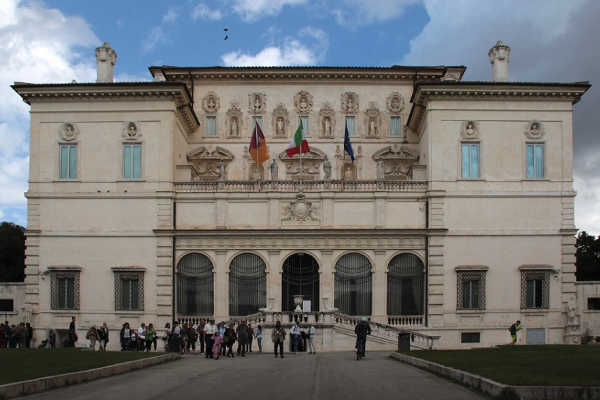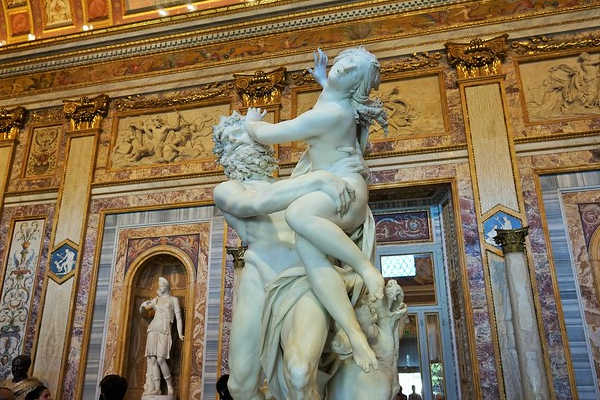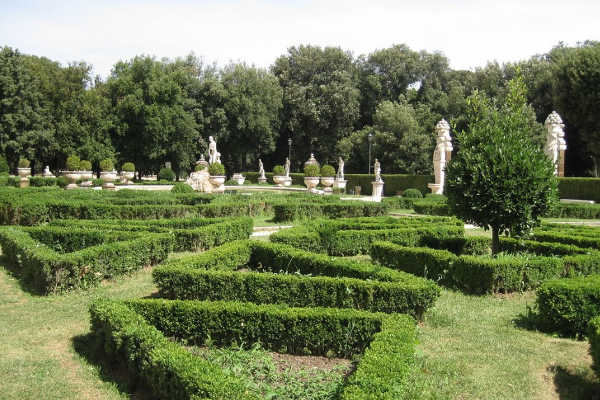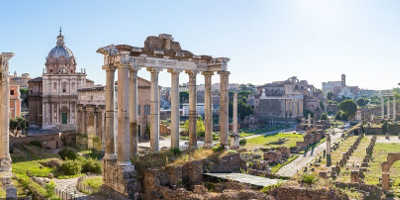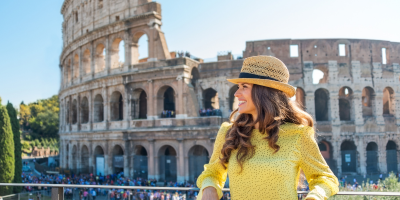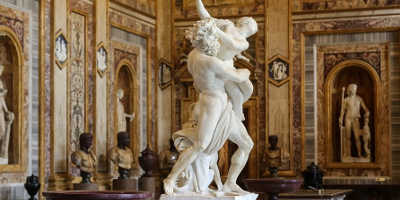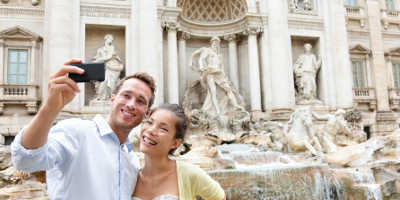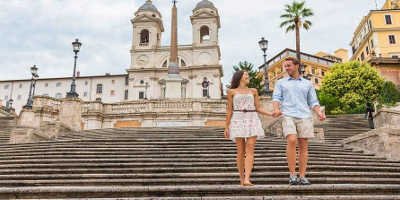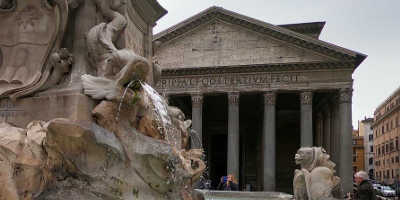Galleria Borghese, Rome
Rome is a destination renowned for its numerous museums. However, a vast majority of these are within the walls of Vatican City. This makes the Borghese Gallery unique as it is under the flag of Italy, and not the Vatican.
Many of the galleries in Rome can be exceptionally crowded however Galleria Borghese is often less busy and contains some of the world’s greatest artworks. Not only is this a considerably popular attraction, but so too are the gardens that were once a part of this estate.
-
History of the Borghese Gallery
The gallery was owned by the Borghese family, a wealthy and important Italian family that moved to Rome from Siena in the 16th century. Many of the family members took on high-ranking roles in society with one family member becoming Pope Paul V. The Borghese Gallery was originally the Villa Borghese Pinciana and belonged to Cardinal Scipione Borghese, Pope Paul V’s nephew. Though the architect in charge was Flaminio Ponzio, much of the design was taken from sketches by Scipione Borghese himself.
This enormous building was originally used only as a country villa by Borghese. Here he would hold lavish garden parties where he would exhibit his impressive art collection. At this time, it was only those invited by Borghese that would get to view the art, however, the Borghese gallery did go on to become one of the first public art galleries. Scipione was a great fan of the works of Bernini and Caravaggio and works by both artists are still displayed within the gallery. It now stands as one of Italy’s most iconic and well-stocked galleries.
Many of the works of art in the gallery were gifts or were purchased but some of them were acquired through less legitimate means. In 1608 it is said that hired thieves broke into a convent under the cover of darkness and stole the altarpiece. The work of art that they stole was ‘Deposition’ by Raphael, and it still hangs in the gallery today. Members of the Borghese continued to add to the collections, but it was Cardinal Borghese who managed to secure a great many masterpieces from some truly skillful artists before his passing.
-
Artworks of the Borghese Gallery
As you enter the gallery you will notice that the building itself is a piece of art. The walls, floors, and ceilings are adorned with marble, beautiful frescoes and elaborate carvings that are almost as impressive as the artwork that they house.
The gallery’s collection is rich in Renaissance, Baroque, and Roman art. Most of these artworks have remained within the walls of the Borghese Gallery, and display the exceptional skill of hands like Bernini, Caravaggio, Peter Paul Rubens, Federico Barocci and even Raphael.
Sculptural highlights include baroque works by Bernini such as ‘Apollo Chasing Daphne’ and ‘David’. The scene depicted in ‘Apollo Chasing Daphne’ appears as though it was caught at the moment it happened and the figures were frozen in time. The story goes that Apollo was struck by Cupid’s arrow and fell for Daphne but as he catches her, she turns into a tree. Her fingers transform into leaves and her toes begin to plant roots. Bernini captures stunning movements in his works, for example in his statue of David, the giant slayer is seen twisted ready to launch his attack on Goliath. The look on his face as he almost bites his lip in preparation is lifelike and is said to be the face of Bernini himself.
Another artist who used this scene to include a self-portrait was Caravaggio. His painting of David holding the head of the giant is displayed within the gallery and the head of the giant is, in fact, the face of Caravaggio.
Other noteworthy pieces include Caravaggio’s “Boy with a Basket of Fruit”, “St Jerome Writing” and “Sick Bacchus” as well as Titian’s “The Scourging of Christ” and “Sacred and Profane Love”. Works by Raphael (who is buried in the Pantheon) also hang in the gallery and are a must-see. “Young Woman with a Unicorn” is one of his finest, and most mysterious, portraits with many people questioning the identity of the woman and guessing that she comes from a wealthy, prolific family of the time.
If you are a huge lover of art then private tours operate in the Storage Room, or ‘Deposito’. A tour here will allow you to view over 250 paintings and see the vastness of the Borghese collection.
-
Borghese Gardens
A visit to the Borghese Gallery would not be complete without a tour of the gardens. Having been converted into Rome’s second-largest public park, these vast gardens will provide you with a full day’s worth of exploration and relaxation. There is nothing quite like strolling through the dappled sunlight that shines through trees overhead and taking a break from the rush and bustle of the streets of Rome.
The origin of these gardens may be a little different from what you’d expect. They were actually once a large vineyard which Scipione Borghese took upon himself to transform into the stately gardens that we see before us today.
The Borghese Gallery isn’t the only gallery situated within the gardens, others you can visit are the Villa Medici, a stately 16th-century mansion, the Museo Carloi Bilotti that sits in an orangery and Pietro Canonica which is dedicated to the eponymous artist.
A visit to the Borghese Gallery and Gardens is an absolute must for any trip to Rome. With beautiful artworks to admire and the beauty of nature to discover, there really is something here for everyone.

